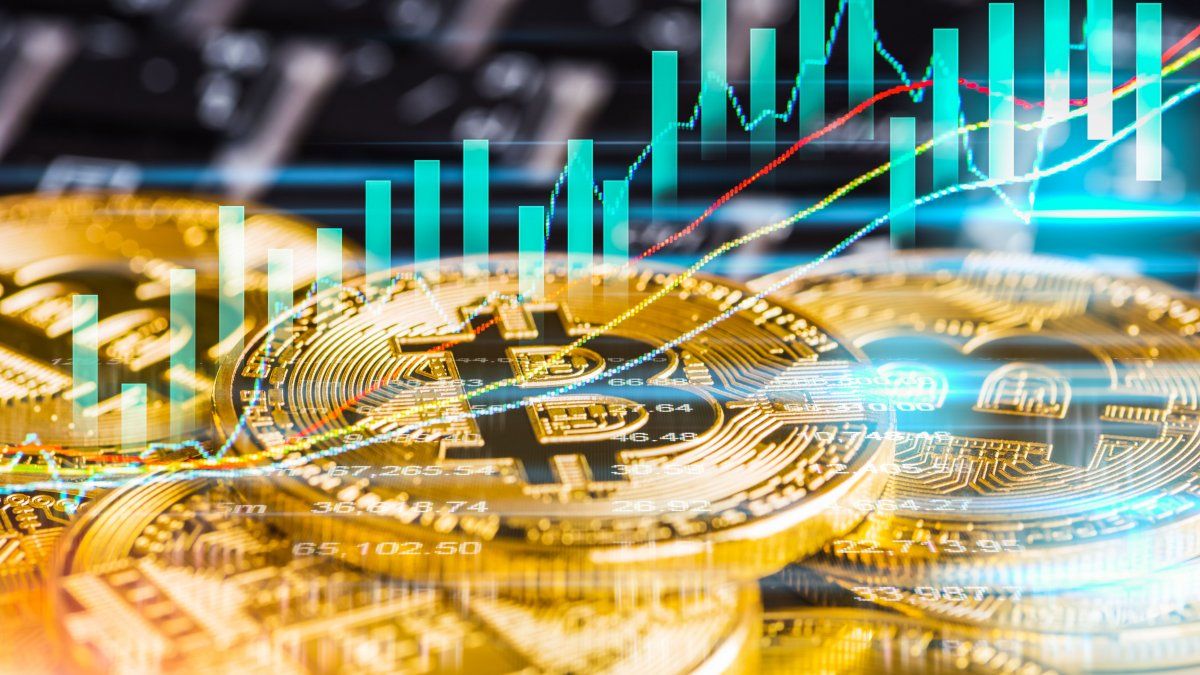Thus, Hinz, who is also the former CEO of Binance, left some definitions that will serve to better understand what is coming, both for cryptocurrencies themselves and for the local market. All this, at a time when it seems that the Bitcoin cools its bullish rally, but without raising alarm signals for the experts.
Maximilian Hinz: The crypto market is cyclical. That is a fact, since it has cycles that are reproduced every certain amount of time. Each cycle lasts approximately four years. and are quite influenced by the halvings. Just this year, one is expected, so there was already a very strong expectation that 2024 would be a bull market, but everyone expected that rally to be after said event.
Q: For those who don’t know, what is halving?
MH: For people who don’t know, The halving is the event by which miners begin to receive 50% of the reward they now receive for each new block that is generated, the reward goes from 6.25 to 3.25 bitcoins, then the effort is the same and the reward is half, or double the effort to leave the reward. YesIt is expected to happen in May and normally after the halving, as the production cost of bitcoins increases, there is a rise in the price. Like any scarce currency, it increases in value.
Q: Did BTC ETFs fuel that bullish sentiment heading into the halving?
MH: Exactly, this time what happened is that the Bitcoin ETF was listed, which is basically a mirror of cryptocurrency for regulated or traditional markets. So, this greatly increased the demand for Bitcoins, that is why they are operating more than 10,000 per day, which were not taken into account before, and it injected an incredible amount of capital into Bitcoin just before the halving. It’s like they put a turbo in it..
Q.: Bitcoin corrected strongly in recent days, do you see any alarm signals?
MH: It is always logical to expect corrections in the market, since it is normal for them to occur. For example, many traders set selling points at specific levels, such as $65,000, $67,000 or $69,000., and, when the price reaches those levels, sell orders are automatically executed. This can cause a decrease in price due to the number of people selling at that time.
However, although some people sell, ETF demand remains very high. As long as there is positive demand, the price is unlikely to drop significantly. That is, as long as people continue buying, there is no reason for Bitcoin to pause this bullish rally.
types-of-ETFs.jpg
The Bitcoin ETF is a turbo for the cryptocurrency at halving time.
Q: What do you consider to be the role of exchanges in the market?
MH: Exchanges play a crucial role in the cryptocurrency ecosystem as they provide the most accessible way for retail users to purchase cryptocurrencies. Bitcoin or other cryptocurrencies. This is especially important for those who are not as experienced in the field, since the process of issuing Bitcoin is decentralized and presents two main options: buying it directly from another person or acquiring it through an exchange.
So, exchanges act as intermediaries by connecting people interested in buying and selling cryptocurrencieseither through peer-to-peer (P2P) transactions or through an orderbook. They are the main access point for many users, as they facilitate the buying and selling process, thus reducing the barriers to entry into the market..
Q: How do you perceive the proliferation of exchanges, especially in Argentina?
MH: The proliferation of exchanges is beneficial for the industry, since it increases the supply and ease of access. The more there are available, the greater the competition and the variety of services offered, which ultimately benefits users and strengthens the cryptocurrency ecosystem as a whole. In this sense, neutrality towards any exchange and the expansion of its number are positive aspects that can improve the experience of all market participants. It’s like banks, having one bank is good, having 500 is better.
Q: What is your diagnosis of the Argentine crypto case?
MH: In Argentina, the use of cryptocurrencies It is not very common among users in general. This is because access to cryptocurrencies is relatively limited. However, Argentines understand the benefits of tokenization and the privacy offered by cryptocurrencies. For example, it is common for banks to not have low denomination dollar bills available. This makes it difficult for users to make small transactions, such as depositing or purchasing a small amount of dollars. In this context, theArgentinians have begun to understand that they can save part of their salary in cryptocurrencies, such as USDT, which have the same value equivalency as the US dollar. This divisibility of cryptocurrencies allows them to carry out smaller and more flexible transactions, which is seen as a significant benefit by Argentine users.
Q: Does the Argentine economic situation play a lot in favor of cryptocurrencies?
MH: The economic situation plays a fundamental role in the adoption of cryptocurrencies throughout Latin America. This phenomenon is evident in countries like Colombia, where factors such as immigration, especially from Venezuela, and the internal economic situation influence the adoption of cryptocurrencies. In Venezuela, the economic crisis has led to an increase in the use of cryptocurrencies, especially to receive remittances from abroad. The decentralization and impossibility of manipulation of cryptocurrencies are seen as significant benefits, which increases the population’s confidence in this type of asset.
WhatsApp Image 2024-03-14 at 11.18.33.jpeg

Maximiliano HinzGeneral Director of Bitget for Latin America.
Q: How do you see the regulation, how is it progressing?
MH: Regulation, when well implemented, is always beneficial as it provides a safe framework for all people to operate within the market. A clear example of effective regulation is the case of ETFs. These investment vehicles represent a form of indirect regulation that provides legitimacy to the cryptocurrency market. When regulated entities are authorized to invest in Bitcoin through ETFs, a form of regulation is being established that allows institutional investors access to the cryptocurrency market. This, in turn, increases transaction volume and market liquidity. Therefore, claiming that regulation is harmful is a simplistic view.. Regulation, when properly designed and implemented, can be beneficial to all market participants.. The Bitcoin ETF example illustrates how smart regulation can boost adoption and economic activity in the cryptocurrency market.
Q: How do you see the approval of the Ethereum ETF after the experience with the BTC ETFs?
MH: The possible approval of an Ethereum ETF It would be a very positive development for the cryptocurrency market. Following the example of Bitcoin, an Ethereum ETF is expected to generate high demand, given Ether’s position as the second most transactional cryptocurrency on the market. Although Ethereum has different characteristics than Bitcoin, Its highly transactional network makes it attractive to institutional investors.
In the long term, this move towards regulation and institutional adoption of cryptocurrencies could lead to a broader transformation of the financial market. It is possible that in the future, traditional stock and ETF markets will be replaced by a global crypto market.. Although this transition will not happen overnight, it is a plausible scenario given the growing adoption of blockchain and cryptocurrency technology around the world. As a last resort, It seems logical that the financial market will evolve towards a cryptocurrency-based infrastructure, as it offers greater efficiency and transparency compared to traditional financial systems.
Source: Ambito
I am a 24-year-old writer and journalist who has been working in the news industry for the past two years. I write primarily about market news, so if you’re looking for insights into what’s going on in the stock market or economic indicators, you’ve come to the right place. I also dabble in writing articles on lifestyle trends and pop culture news.




